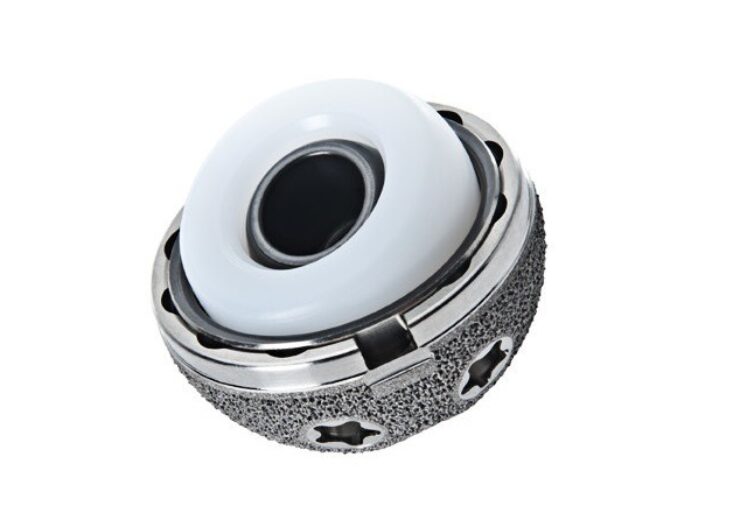The OR3O Dual Mobility System incorporates OXINIUM DH bearing surface for its liner, which enhances the hardening through an additive manufacturing process, and features OXINIUM on XLPE for its femoral head and polyethylene inserts

Smith+Nephew OR3O Dual Mobility System. (Credit: PRNewswire/ Smith+Nephew)
UK-based medical equipment manufacturer Smith+Nephew has introduced its OR3O Dual Mobility System for use in hip arthroplasty procedures in India.
Smith+Nephew will provide its dual mobility system for both primary and revision applications and is cross-compatible with the R3 Acetabular System.
According to the company, dual mobility implants have a small diameter femoral head that locks into a larger polyethylene insert, compared with traditional solutions.
The smaller femoral head is believed to increase stability, reduce dislocation risk, and provide an improved range of motion.
Unlike most hip implants that feature a Cobalt Chrome (CoCr) liner along with CoCr/SST or ceramic head balls, OR3O incorporates OXINIUM DH bearing surface for its liner.
OXINIUM DH (diffusion hardened) is a unique variation of Smith+Nephew’s OXINIUM technology that enhances the depth of hardening through an additive manufacturing process.
In addition, the dual mobility system will feature unique OXINIUM on XLPE for its femoral head and polyethylene inserts, reducing the wear and corrosion risks associated with the alloy.
Smith+Nephew South Asia managing director Joaquin Lasso said: “Smith+Nephew’s OR3O Dual Mobility System is a groundbreaking introduction for India that offers technology not available in other systems.
“Over a dozen peer-reviewed publications have now cited or expressed concerns over corrosion or elevated ions in CoCr modular dual mobility liners. The reduced corrosion of our OXINIUM and OXINIUM DH bearing surface sets OR3O apart from the competition.”
According to studies, dual mobility is uniquely positioned to manage dislocation, better than metal-on-metal or ceramic-on-ceramic large head series.
Post-operative dislocation is the second most common cause for revision of a total hip replacement and a serious concern for surgeons during total hip arthroplasty.
Smith+Nephew introduced its modular dual mobility segment to India, in 2015.
Last month, the British medical equipment maker introduced its Regeneten Bioinductive Implant in India to treat rotator cuff disease.
Regeneten is a collagen-based implant designed to support the body’s natural healing response to enable the growth of new tendon-like tissue.
